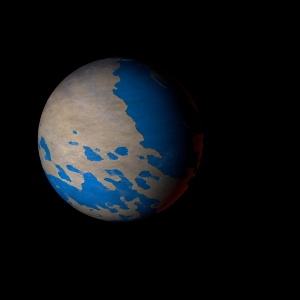|
|
Space Astro
|
Info for exoplanet "Yezwo-j"
| Scientific (actual) data |
|---|
| Name | K2-320 b |
| Planet status | Confirmed |
| Radius | 0.234 |
| Orbital period | 1.995 |
| Semi major axis | 0.0142 |
| Inclination | 87.84 |
| Discovered | 2020 |
| Updated | 2021-02-05 |
| Tconj | 2457910 |
| Impact parameter | 0.49 |
| Temperature (kelvin) | 698 |
| Publication | Published in a refereed paper |
| Detection type | Primary Transit |
| Alternate names | 2MASS J10530051+0518238 b, EPIC 201796690 b, TIC 281748980 b, WISE J105300.47+051823.5 b |
| Star name | K2-320 |
| Right ascension | 163.25° |
| Declination | 5.31° |
| Mag j | 13.411 |
| Mag h | 12.823 |
| Star distance | 109.07 |
| Star mass | 0.12 |
| Star radius | 0.3 |
| Star temperature | 3157 |
| Star alternate names | 2MASS J10530051+0518238, EPIC 201796690, TIC 281748980, WISE J105300.47+051823.5 |
| Wikipedia article | K2-320 b |
Back
| |
| Fictional info (?) |
|---|
| Suggested name | Yezwo-j |
| Planet type | Hot planet |
|
| Atmosphere | Nitrogen | 46% |
| Carbon monoxide | 38% |
| Ethane | 14% |
| Hydrogen deuteride (HD) | 0.62% |
| Neon | 0.38% |
| Atmospheric pressure | 0.09 bar |
 |
| No known satellites |
| Google search for Yezwo-j |
|
Website by Joachim Michaelis
|
|
|
|